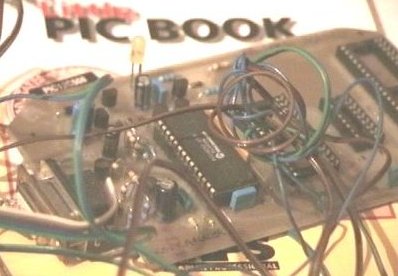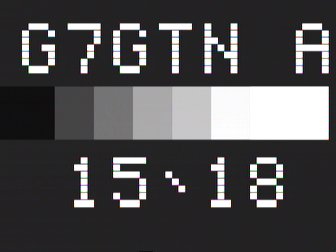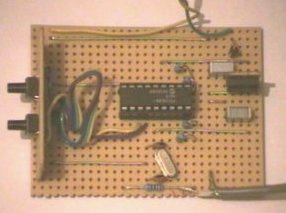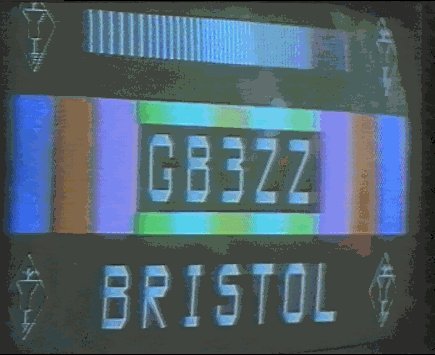The “PIC”
Microchip from Arizona Micro is a reduced instruction set (RISC) processor.
They are very commonly used in electronic projects now. They are being
used extensively by today's ATV constructors, for diverse things such
as testcard generators to transmitter frequency control. They can replace
numerous TTL integrated circuits in any application. Costing only a
few pounds each they are the ideal solution. Some of the devices have
EEPROM based memory allowing them to be used over & over again.
To
make use of the “PIC” you will require some kind of device
programmer, these do not have to be at all complex in their design.
The picture shown below is of a type that will handle most chips in
the available range right up to the 40-pin types. It shows just how
versatile these devices are by being controlled by a PIC16C57 itself.
There are plenty of free designs available from
the Internet. A quick search on Google will provide plenty of details.
 Also available
to help your development task are a series of excellent books from Maplin
Electronics PLC costing around £20 each. They cover hardware designs
but more importantly, include all software required to get the project
working on a diskette. You may also consider purchasing either the Maplin
catalogue on CD-ROM, or possibly indeed even the Microchip CD-ROM as
they contain valuable technical information along with supporting software
and examples.
Also available
to help your development task are a series of excellent books from Maplin
Electronics PLC costing around £20 each. They cover hardware designs
but more importantly, include all software required to get the project
working on a diskette. You may also consider purchasing either the Maplin
catalogue on CD-ROM, or possibly indeed even the Microchip CD-ROM as
they contain valuable technical information along with supporting software
and examples.
Generally you would programme the devices in Assembly Language, but
it is also now possible to use a special dialect of the Basic Language
called "PICBASIC" This releases the power of these devices
to anyone who can use a text editor.This version of Basic has commands
to check for key presses, drive an LCD display amongst many other things.


A PIC based simple
test generator. Built using a single PIC type “16F84” and
very few passive components. The video display produced is of a scrolling Callsign & Clock to the standard
1V P-P signal.


 Also available
to help your development task are a series of excellent books from Maplin
Electronics PLC costing around £20 each. They cover hardware designs
but more importantly, include all software required to get the project
working on a diskette. You may also consider purchasing either the Maplin
catalogue on CD-ROM, or possibly indeed even the Microchip CD-ROM as
they contain valuable technical information along with supporting software
and examples.
Also available
to help your development task are a series of excellent books from Maplin
Electronics PLC costing around £20 each. They cover hardware designs
but more importantly, include all software required to get the project
working on a diskette. You may also consider purchasing either the Maplin
catalogue on CD-ROM, or possibly indeed even the Microchip CD-ROM as
they contain valuable technical information along with supporting software
and examples.

